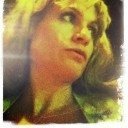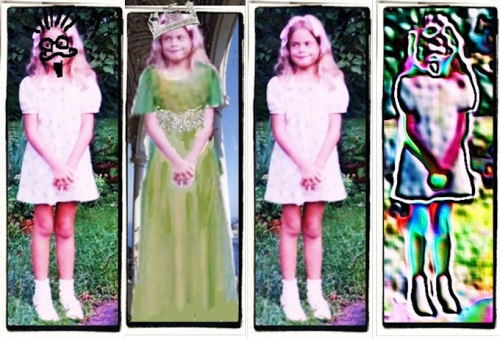Writing Character: One Most Like Yourself
By Elissa Field
 The impetus for this article arose from a small tangent during a fabulous workshop I participated in with author Ann Hood. Among stories I’ve worked on in the past, I knew who my trickiest, most elusive or least successful characters were, but hadn’t noticed a pattern until an offhand comment from Ann. In responding to another writer’s manuscript in workshop, she observed that the flattest characters we write are sometimes those most like ourselves. A little bell went off inside as I realized it was these characters I wrote with the least interest.
The impetus for this article arose from a small tangent during a fabulous workshop I participated in with author Ann Hood. Among stories I’ve worked on in the past, I knew who my trickiest, most elusive or least successful characters were, but hadn’t noticed a pattern until an offhand comment from Ann. In responding to another writer’s manuscript in workshop, she observed that the flattest characters we write are sometimes those most like ourselves. A little bell went off inside as I realized it was these characters I wrote with the least interest.
In conversations with fellow writers shortly after, over and over they agreed, which provoked need to tie together Hood’s advice with other a-ha’s on how to bring these characters to life.
Part 1 will define why this is a challenge. Part 2 of the series will offer revision strategies.

Adapted from a picture taken of me with my best friend (cropped, in adaptation) on the first day of 2nd grade. In many ways, characters are thinly disguised versions of the writer. Sometimes that grants vivid authenticity. Sometimes, not so much.
First, what does that mean: “most like myself”?
In discussing this with friends, many are writing fiction from an autobiographical story, so have a character who is literally modeled from themselves. Others might write themselves as a character thrown into unfamiliar or fantastical settings as if the stories were vicarious lives. Hood herself used the example of writing her novel, The Knitting Circle, which she wrote in response to grief overthe death of her daughter. I don’t write autobiographically, but each story seems to have a character — not always the protagonist — who is most invested with my own history. She is my gender, and may have a lifestyle, profession, interests, roots or age drawn from my own.
Each of these is an example of a character drawn from the author’s own identity.
But isn’t that what it means, to “write what you know”?
Obviously, the odd snippets drawn from our lives can set our work apart. Such details give our work texture and voice and authenticity. One of my favorites to write was the opening lines of a novel draft where the character has a memory of running from the shoreline carrying a minnow cupped in her hands as a girl. I like the immediate connection to childhood and nature, and it was perfect metaphor to the mystery of the story.
Drawing on actual experience creates writing infused with and anchored in something vivid. That’s why we do it. That effective use of authorial experience is not the challenge this article addresses.
Yet writing from self — not just experience — develops its own challenge.
In the workshop with Hood and in conversation with writing friends, the challenge arose that characters written based on ourselves sometimes feel — at least in early drafts — flat.
In some cases the writer is aware of it. In other cases, it was something reported back from beta readers or agents. The character might be written accurately, but wasn’t engaging or dynamic. They were lifeless or invisible or downright annoying or defensive or without motivation.
Hood is known for teaching nonfiction and memoir, and her fiction is often rooted in personal experience. During our workshop, in responding to one writer’s manuscript, she gave example of the process she went through in revising one of her novels.
Making a connection to the weakness she addressed in her revisions and the manuscript at hand, she said: characters telling our own story “can suffer from attachment to reality.” The problem, she said, is that reality often comes without the fullness and resonance of story.
In my experience, I was surprised to notice authorial blindness might have me writing vivid factual details of the character’s life, yet her emotions and motivation remain unrealized or unengaging, in the same way that you could have a vivid, accurate list of ingredients for the grocery store, yet that is not the same as visualizing a fully-prepared dinner laid out for Thanksgiving.
Like shaving or putting lipstick on without a mirror, you know where you are, but not quite how to see yourself — or therefore reveal yourself to a reader — without perspective.
Some examples:
My own weakness is that the character most like myself is often the one I am least curious about. I am excited getting to know this shady, paramilitary character in my draft, Wake, or the Cuban-exile, artist mother in Breathing Water, or the fastidious doctor surrounded by monkeys in another draft. The daughter or girlfriend character? Not so much. It’s not that I don’t like her, but, well, I sort of forget to write her. Raised to be a good, self-deprecating American, I might even tend to write her vaguely annoying.
Sometimes — especially if I was writing into unfamiliar territory — this character provided my own entry point into the story, the point at which I bridge my own knowledge or culture or personality, to the less familiar places and culture and experiences I might take the story and characters. The resulting character revealed my vulnerability and initial lack of insight, without yet contributing the meaning such a character was intended to offer.
Hood’s basic advice:
On a most basic level, Ann Hood said the key to writing characters based on the writer is for the writer to create authorial distance.
Begin with the value of your experience, but then create distance by changing key elements through the process of asking, “What if?” Create differences between the character and self so that you start to feel that curiosity, start to imagine that character as someone fully fledged and outside yourself.
Having bashed my own characters to provide examples, I should offer one I’ve written where I saw Hood’s advice working. I feel myself closely identified with the protagonist of my story Jar of Teeth. Beginning with truths from my own life, this character had once marched on Washington for Roe v. Wade (as I once did) and made it through college and dating years never unwittingly pregnant and therefore breathed a sight of relief at never having had to use the rights ofRoe v. Wade (also true). But what if she were older than myself, living in a different city, and with a job cleaning the taxidermied exhibits in a museum? And what if her child were not my young sons but a college aged daughter, and what if that daughter was now asking her to pay to avert her own sudden emergency? Without giving away the whole story, I can say that I see this character as more three dimensional, being outside myself, than if I were imagining her from the inside-out.
